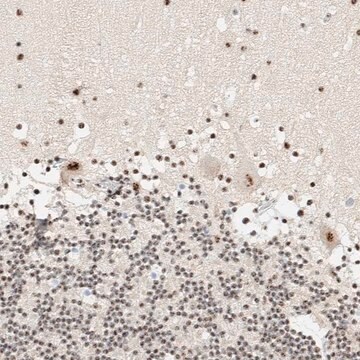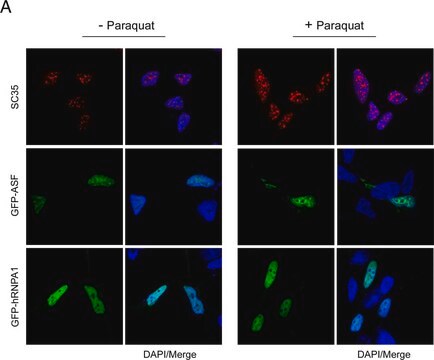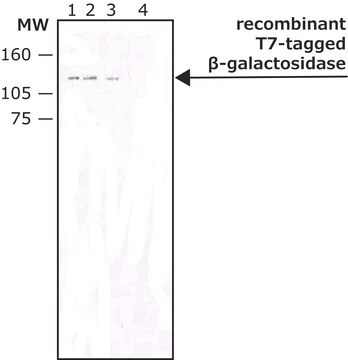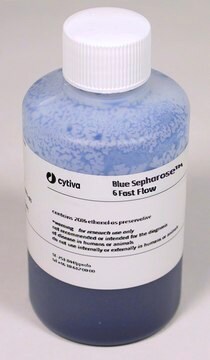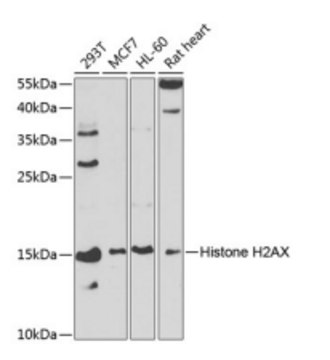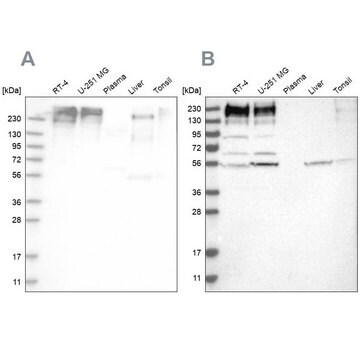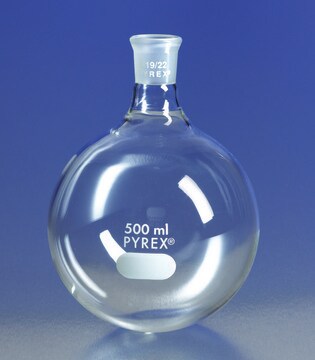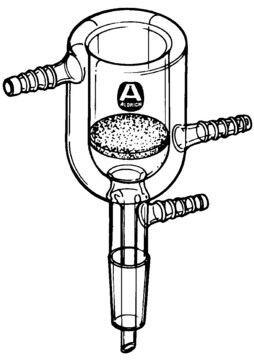04-1550
Anti-SC-35 Antibody, clone 1SC-4F11
ascites fluid, clone 1SC-4F11, from mouse
Sinônimo(s):
Protein PR264, Splicing component, 35 kDa, Splicing factor SC35, splicing factor, arginine/serine-rich 2
About This Item
Produtos recomendados
fonte biológica
mouse
Nível de qualidade
forma do anticorpo
ascites fluid
tipo de produto de anticorpo
primary antibodies
clone
1SC-4F11, monoclonal
reatividade de espécies
human, mouse, rat
técnica(s)
immunocytochemistry: suitable
western blot: suitable
Isotipo
IgG1κ
nº de adesão NCBI
nº de adesão UniProt
Condições de expedição
dry ice
modificação pós-traducional do alvo
unmodified
Informações sobre genes
human ... SRSF2(6427)
Descrição geral
Especificidade
Imunogênio
Aplicação
Epigenetics & Nuclear Function
RNA Metabolism & Binding Proteins
Qualidade
Western Blot Analysis: 1:1,000 dilution of this antibody detected Sc35 on 10 µg of A431 cell lysate.
Descrição-alvo
forma física
Armazenamento e estabilidade
Handling Recommendations: Upon receipt and prior to removing the cap, centrifuge the vial and gently mix the solution. Aliquot into microcentrifuge tubes and store at -20°C. Avoid repeated freeze/thaw cycles, which may damage IgG and affect product performance.
Nota de análise
A431 cell lysate
Exoneração de responsabilidade
Não está encontrando o produto certo?
Experimente o nosso Ferramenta de seleção de produtos.
Código de classe de armazenamento
12 - Non Combustible Liquids
Classe de risco de água (WGK)
nwg
Ponto de fulgor (°F)
Not applicable
Ponto de fulgor (°C)
Not applicable
Certificados de análise (COA)
Busque Certificados de análise (COA) digitando o Número do Lote do produto. Os números de lote e remessa podem ser encontrados no rótulo de um produto após a palavra “Lot” ou “Batch”.
Já possui este produto?
Encontre a documentação dos produtos que você adquiriu recentemente na biblioteca de documentos.
Nossa equipe de cientistas tem experiência em todas as áreas de pesquisa, incluindo Life Sciences, ciência de materiais, síntese química, cromatografia, química analítica e muitas outras.
Entre em contato com a assistência técnica